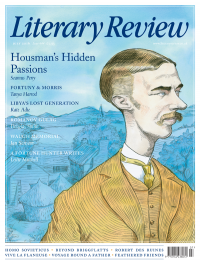Duncan Wu
Mythomania
We think we know the Romantics. Their endlessly retold lives have become familiar through shorthand vignettes: Blake and his wife sitting naked in their summer house; Coleridge scribbling poetry under the influence of class A drugs; Wordsworth jumping his own sister; Shelley committing suicide by sailboat; Keats born in a stable.
What does any of this show? Not only that we know very little, but also that what we think we know is mostly redundant. Take, for instance, the way we use the adjective ‘Byronic’, flinging it around as if its significance were obvious: Lord Owen, the Daily Telegraph told us on 28 May this year, has a ‘Byronic dash of Richard Burton’; in an interview for the New York Times earlier that month, D A Pennebaker referred to Bob Dylan’s ‘Byronic quality’; in a recent performance of Adelson e Salvini, The Guardian assured us, the Italian tenor Enea Scala looked ‘dashingly Byronic’.
When making judgements about what historical figures were really like, a good place to begin would be eyewitness testimony. Accounts of Byron are remarkably consistent. In youth he was, Isaac D’Israeli recorded, ‘all rings and curls and lace … more like a girl than a boy’. He remained so throughout his life; in his final year, as James Hamilton Browne noted, his ‘delicately formed features were cast rather in an effeminate mould’. Not only that: Byron liked to wear diamond necklaces and earrings, rolled his hair in the early 19th-century equivalent of curlers and hankered after pubescent boys.
The more obscure details of Byron’s life make his predilections plain. Fresh off the boat in Turkey in May 1810, he and his friend John Hobhouse struck out for the local ‘buggering shop’, where they feasted upon the sight of a go-go boy, whom Hobhouse described as ‘dancing in a

Sign Up to our newsletter
Receive free articles, highlights from the archive, news, details of prizes, and much more.@Lit_Review
Follow Literary Review on Twitter
Twitter Feed
It wasn’t until 1825 that Pepys’s diary became available for the first time. How it was eventually decrypted and published is a story of subterfuge and duplicity.
Kate Loveman tells the tale.
Kate Loveman - Publishing Pepys
Kate Loveman: Publishing Pepys
literaryreview.co.uk
Arthur Christopher Benson was a pillar of the Edwardian establishment. He was supremely well connected. As his newly published diaries reveal, he was also riotously indiscreet.
Piers Brendon compares Benson’s journals to others from the 20th century.
Piers Brendon - Land of Dopes & Tories
Piers Brendon: Land of Dopes & Tories - The Benson Diaries: Selections from the Diary of Arthur Christopher Benson by Eamon Duffy & Ronald Hyam (edd)
literaryreview.co.uk
Of the siblings Gwen and Augustus John, it is Augustus who has commanded most attention from collectors and connoisseurs.
Was he really the finer artist, asks Tanya Harrod, or is it time Gwen emerged from her brother’s shadow?
Tanya Harrod - Cut from the Same Canvas
Tanya Harrod: Cut from the Same Canvas - Artists, Siblings, Visionaries: The Lives and Loves of Gwen and Augustus John by Judith Mackrell
literaryreview.co.uk